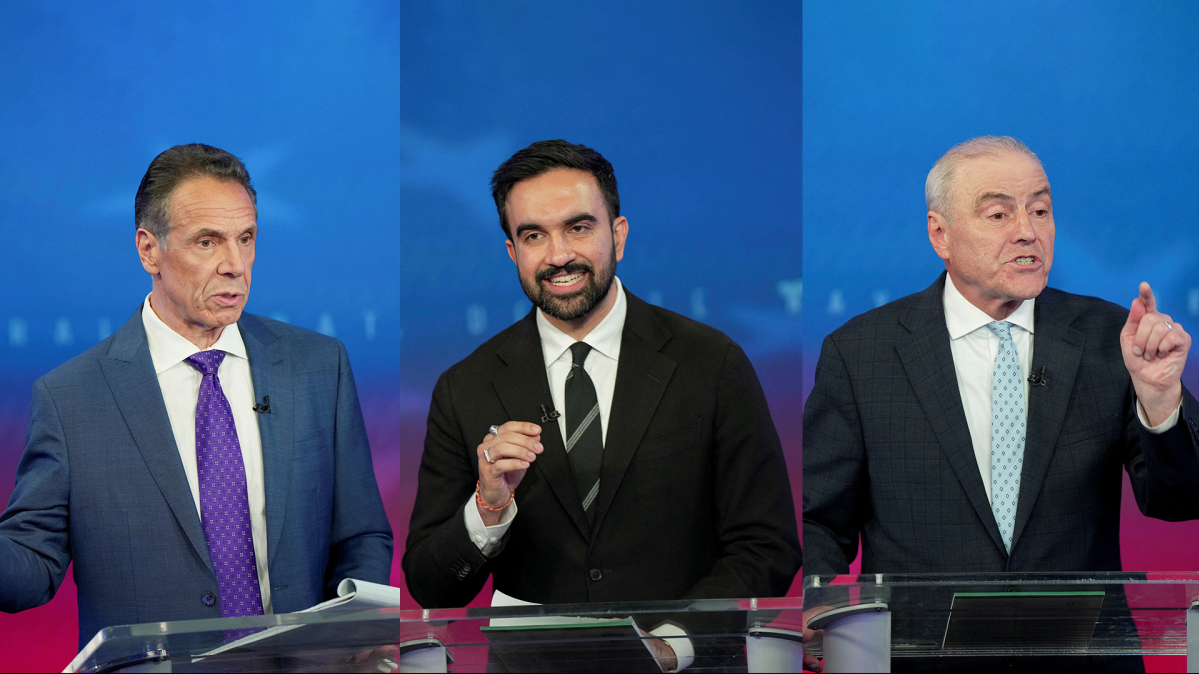U.S. interception of Skipper tanker signals harder line on Venezuela
Washington’s seizure of a tanker carrying Venezuelan oil shows a shift from financial sanctions to direct maritime action, further straining relatio...

New York City’s mayoral election on 4 November 2025 has become one of the most closely watched local races in the United States.
The three major contenders are Zohran Mamdani (Democrat), Andrew Cuomo (Independent), and Curtis Sliwa (Republican). While Sliwa remains in the race, most of the attention centres on the showdown between Mamdani and Cuomo.
Zohran Mamdani, a state assemblyman from Queens and self-described democratic socialist, secured the Democratic nomination after defeating Cuomo in the 24 June primary — a result that shocked the party establishment. His campaign focuses on affordability and housing, promising a rent freeze for rent-stabilised units, fare-free city buses, and expanded public housing. Mamdani also pledges to redirect parts of the city’s budget toward social services and infrastructure in under-served communities. Those proposals have resonated with younger voters, renters, and working-class New Yorkers frustrated by rising costs and inequality.
Andrew Cuomo, who resigned as governor in 2021 amid sexual-harassment allegations, is seeking a political comeback through an independent run after losing the Democratic primary. He presents himself as a centrist pragmatist who can restore stability, professional management, and fiscal discipline to City Hall. Cuomo’s campaign is backed by some business leaders and moderate Democrats who view Mamdani’s agenda as risky. His decision to remain in the race has complicated what might otherwise have been a straightforward Democratic win.
Curtis Sliwa, the Republican nominee and founder of the Guardian Angels, continues to campaign on a law-and-order platform while also stressing affordability and tax relief. But in a city that votes overwhelmingly Democratic, his path to victory is widely viewed as narrow.
Why this race matters:
The election is being treated as a referendum on the future of liberal governance in big cities — whether New York embraces Mamdani’s progressive model of redistribution and social spending, or returns to Cuomo’s centrist promise of managerial competence. National Democratic leaders are watching carefully. Figures like Senate Minority Leader Chuck Schumer and former President Barack Obama have praised aspects of Mamdani’s campaign but stopped short of formal endorsements, wary of deepening internal rifts.
Polls and dynamics:
Recent polling from Emerson College and Quinnipiac University shows Mamdani maintaining a strong lead in a three-way race, with Cuomo second and Sliwa trailing in single digits. Analysts caution, however, that late-breaking shifts could occur if moderate and conservative voters consolidate behind Cuomo.
When polls close on 4 November, New Yorkers won’t just be choosing a mayor — they’ll be defining the city’s identity for the next era: a progressive experiment led by Mamdani, or a centrist restoration under Cuomo.
Russia’s human rights commissioner, Tatyana Moskalkova, has said that Ukraine has not provided Moscow with a list of thousands of children it alleges were taken illegally to Russia, despite the issue being discussed during talks in Istanbul.
Iranian authorities have seized a foreign tanker carrying more than 6 million litres of smuggled fuel in the Sea of Oman, detaining all 18 crew members on board.
An explosive device found in a vehicle linked to one of the alleged attackers in Bondi shooting has been secured and removed according to Police. The incident left 12 people dead.
The latest round of clashes between Thailand and Cambodia has left 15 Thai soldiers dead and 270 others injured, Thailand’s Ministry of Defence spokesman Surasant Kongsiri said at a press conference on Saturday.
Syrian President Ahmad al-Sharaa has offered condolences to President Donald Trump following an ISIS attack near the ancient city of Palmyra that killed two U.S. soldiers and a civilian interpreter, Syrian and U.S. officials said Sunday.
Washington’s seizure of a tanker carrying Venezuelan oil shows a shift from financial sanctions to direct maritime action, further straining relations with Caracas and increasing risks for global shipping.
Anewz brings you the best videos of the day from around the world covering everything from uplifting events to updates in conflict zones.
French senators on Monday approved a revised 2026 budget bill that the government warned could worsen the country’s fiscal deficit, setting the stage for tense negotiations between parliament’s two chambers later this week.
Flooding in Bolivia’s eastern Santa Cruz region has killed at least 20 people after an overflowing river swept through multiple communities, authorities said on Monday, with the toll expected to increase as rescue teams reach areas that were previously inaccessible.
Filmmaker Rob Reiner and his wife Michele were found dead in their Los Angeles home in an apparent homicide, with police arresting their son, Nick Reiner, who is being held on a $4 million bond.
You can download the AnewZ application from Play Store and the App Store.

What is your opinion on this topic?
Leave the first comment